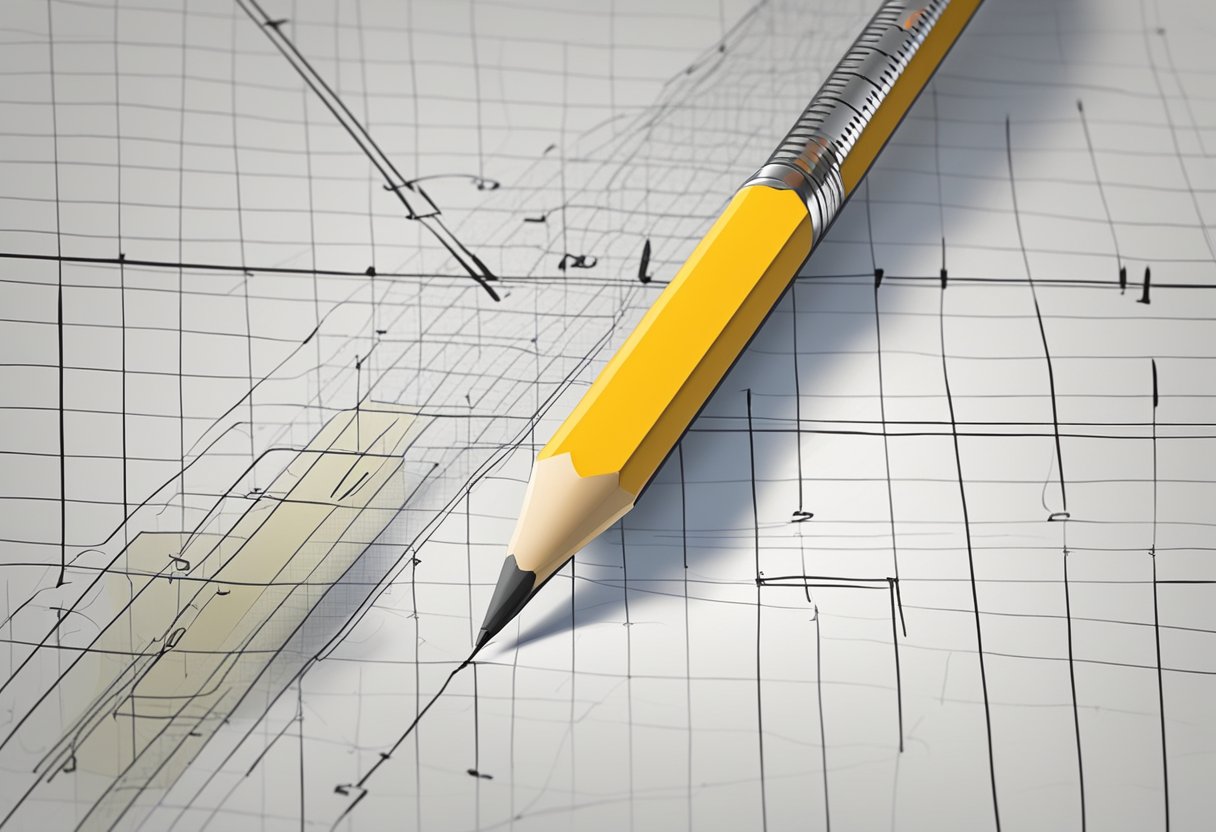
To write linear equations, I first identify the essential components: the slope and the y-intercept. The slope, denoted as ( m ), measures the steepness of the line, while the y-intercept, represented by ( b ), indicates where the line crosses the y-axis.
For example, in the slope-intercept form ( y = mx + b ), I can easily plot the line once I know these two values. This particular form is beneficial as it provides a clear visualization of how the line behaves on a graph.

Understanding different formats can be crucial, such as the point-slope form $y – y_1 = m(x – x_1)$, which is especially useful if I know a particular point $(x_1, y_1) $ through which the line passes, in addition to the slope.
Another important format to be familiar with is the standard form, ( Ax + By = C ), which helps analyze the line in a more algebraic sense and is commonly used for solving systems of linear equations.
As I delve into the world of linear equations, I find that recognizing the subtle differences between these representations can demystify how the equations translate to graphs.
Stay tuned, and I’ll show you how these concepts apply in real-life situations, making sense of everything from daily budgeting to understanding the trajectory of a satellite!
Steps for Writing Linear Equations
When I approach writing a linear equation, the first thing I recognize is that it’s the equation of a straight line. This type of equation can come in various forms, such as slope-intercept form, standard form, and point-slope form. Here are the steps that guide me through the process:
Determine the slope (m) and the y-intercept (b) if I am using the slope-intercept form, which is expressed as $y = mx + b$. The slope represents the steepness of the line, and the y-intercept is where the line crosses the y-axis.
Component Description Example Slope (m) Steepness of the line $m = \frac{rise}{run}$ Intercept (b) The point where the line crosses the y-axis Line crosses at $(0, b)$ If I have two points, say $(x_1, y_1)$ and $(x_2, y_2)$, I can calculate the slope as $m = \frac{y_2 – y_1}{x_2 – x_1}$.
To convert to standard form ($Ax + By = C$), where A, B, and C are constants, I rearrange the slope-intercept form. I make sure that A is a non-negative integer for the standard convention.
When given a single point and the slope, I can use the point-slope form to define the equation: $(y – y_1) = m(x – x_1)$.
In each step, I substitute known values for the variables and solve for the unknowns to find the equation of the line.
Remember, all linear functions graph as a straight line and each form has its advantages depending on the given information. The choice of form depends on what I find most useful for the task at hand, whether it’s for graphing or finding solutions to systems of equations.
Solving Linear Equations
When I solve linear equations, I often consider whether I’m working with one variable, two variables, or even three variables. The process will vary slightly depending on this.
For equations with one variable, the goal is to isolate the variable on one side of the equation to find its value. This involves simple operations: add, subtract, multiply, or divide.
If an equation has two variables, graphing is a common method I use. By plotting the coordinates on the Euclidean plane, I can visually determine where two lines intersect, which represents the solution to the system of linear equations.
Here’s an example of solving an equation through graphing:
Given the two equations in Cartesian coordinates:
- ( y = 2x + 3 )
- ( y = -x + 1 )
To graph, I find the change in y (rise) and change in x (run) to determine the slope. Then, I plot the y-intercept and use the slope to find other points.
Using substitution or elimination is efficient for non-graphical solutions, especially with equations involving more real numbers. With substitution, I usually solve one equation for one variable and then substitute that expression into the other equation. With elimination, I add or subtract equations to cancel out one variable, and then solve for the other.
Here’s a table outlining these methods:
| Method | Description | Example |
|---|---|---|
| Substitution | Solve one equation for one variable and substitute | ( 2x = y – 3; x + y = 4 ) |
| Elimination | Add or subtract equations to eliminate a variable | ( y = 2x +3; 2y + x = 5 ) |
| Graphing | Plot both equations and find the intersection point | Graph ( y = 3x + 1 ) and ( y = 2x – 4 ) |
When I deal with three variables, the process is similar but requires more steps. I might use elimination multiple times or combine both elimination and substitution to find the solution.
By practicing these techniques with various examples, I’ve found that solving linear equations becomes more manageable. Always remember that the goal is to find the value(s) that satisfy all given equations in the system of linear equations.
Conclusion
In my journey exploring linear equations, I’ve discovered that there are various ways to express these relationships. The beauty of linear equations lies in their simplicity and the foundational role they play in algebra.
Whether in standard form ($Ax + By = C$) or slope-intercept form ($y = mx + b$), these equations graph as straight lines, each point lying on the line being a solution to the equation.
The process of writing an equation begins with understanding the slope, or the rate at which the y-value changes with the x-value.
Through my experience, I found that knowing how to calculate the slope ($m$) and identifying the y-intercept ($b$) is critical for writing linear equations efficiently.
When graphing, finding the x and y-intercepts offers a tangible representation of the equation on a coordinate plane. For example, to find the y-intercept from the standard form, I set $x$ to zero and solve for $y$.
Conversely, setting $y$ to zero gives me the x-intercept, which is crucial when graphing without converting to slope-intercept form.
After graphing several linear equations, it’s clear that they depict a vast array of real-world scenarios. From calculating profit over time to representing constant speed, these equations are not just abstract concepts but tools that describe and predict real-life patterns and trends.
In summary, one should remember that linear equations serve as a gateway into more complex algebraic concepts, and mastering them is an essential step for anyone interested in delving into the world of mathematics.
